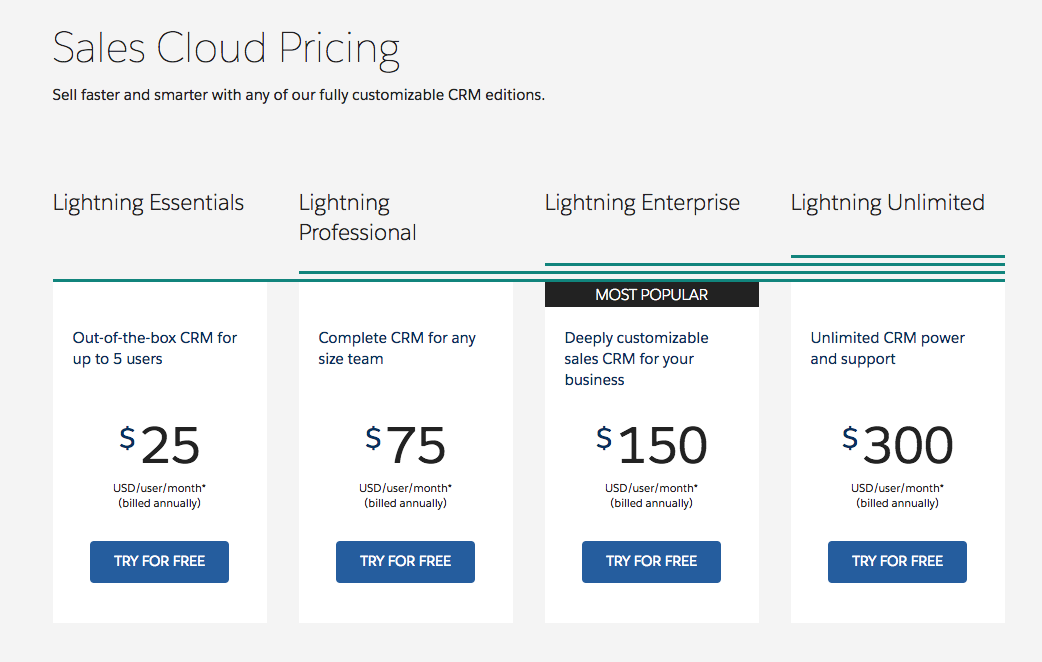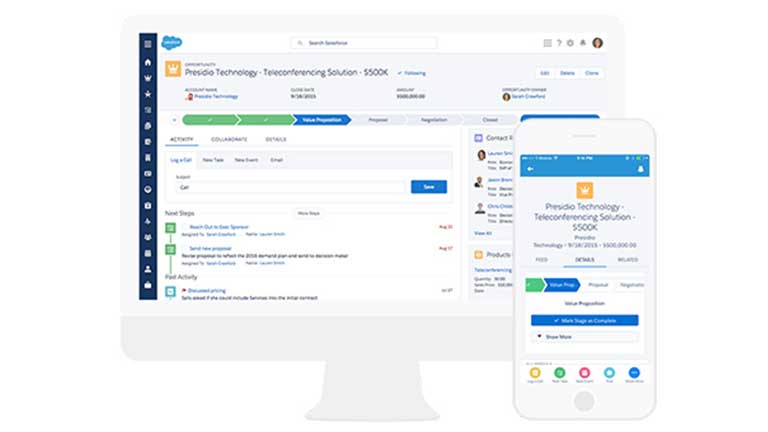SALES PRODUCTIVITY BEST PRACTICES
Sales Summit: The 'Why' and 'What' of Sales and Marketing Alignment
Companies who have Marketing and Sales alignment are 60% better at closing deals. Closing deals impacts revenue. Companies with best-in-class alignment have over 100% less friction between sales and marketing.
Get the "Why" and "What" of Sales and Marketing from Jill Rowley, Founder and Chief Evangelist #SocialSelling.
Reach. Teach. Educate. Empower. Help. How the New Model of Sales Is Driving Sales Enablement
Customers in this age of social media have more choice and louder voices. Because today’s buyers are drastically different than the buyers of even 10 years ago, sales and marketing also needs to change. The job of sales now, says Jill Rowley, Founder and Chief Evangelist of #Social Selling, is to
- reach and teach,
- educate and empower.
The new model of sales is about being a trusted source of information in order to help the customer. It is reaching out to customers through social networks to guide and engage buyers...all on the customer’s terms and on their time table.
In this Dreamforce breakout session, Rowley trains sales and marketing professionals to be guides for their customers in their buying decisions. The paradigm shift of how sales needs to interact with customers has a domino effect for marketing as well. Both departments must align for sales enablement. The emerging field of sales enablement allows a common ground for marketing and sales to work together to provide relevant information for their customers. The role of sales has changed more in the last 10 years than it did in the last 100; sales and marketing must work together in the new sales enablement space. The goal, asserts Rowley, is to serve customers not sell to them. Your new role in sales is to guide buyers along in their journey.
Sales need to know more about marketing. marketing needs to know more about sales; everyone needs to know more about the customer, says Rowley. One thing we do know about customers, Rowley reports, is that 92% of them start the buying process on the Internet and 67% of their buying process is digital. She presents these statistics to prove today’s customers are socially connected, mobile, empowered. They need a guide who helps them decide rather than a salesperson ready to pounce.
Rowley shares the mindset of the new selling landscape is helping not selling. She offers 5 principles of sales enablement to reach, teach, educate, empower, and connect with enlightened buyers:
Make Your Digital Reputation Customer-Centered
Eighty-two percent of the world’s online population can be reached via social networks. Because buyers can research people and companies, they don’t have to trust corporate messages. It is very likely customers will search your LinkedIn or other social profiles to get a read on you as a person and as an ambassador of your company. Rowley teaches that people buy from people they know and trust. A big mistake sellers make is to tailor their LinkedIn profiles to employers, says Rowley. A potential customer is likely to be turned off by your self-promotion of hard-selling and quota attainment. Buyers want a problem-solver, not an expert negotiator. Instead, says Rowley, optimise your profiles for the buyer’s benefit by sharing content on LinkedIn and Twitter to show your expertise and interests.
ABC: Always Be Connecting
If you have connected with someone enough to trade business cards, connect with them on LinkedIn as well, but use awareness. With your invitation, send a personal note with a reminder of where you met. Otherwise, it’s a cold call, and no one likes a cold call. Social connectedness is about engaging with others and showing an interest in their work. Rowley shares her insight into the modern customer: “For you to be interesting to the customer, you need to be interested in them.”
Show interest in your customer by being where your customer is and reading the things your customer reads, counsels Rowley. Retweeting, posting, and sharing relevant content--your own or other people’s content--allows for you and the customer to forge common interests and for you become viewed an expert guide in what your customer needs to know.
Use Content to Engage Your Buyer
In the new landscape of selling Content is where marketing and sales departments collide--but in a good way. Sales enablement best practices have marketing producing meaningful and informative content and sales sharing that content in ways relevant to the customer. Because of the changing sales environment, both departments will be required to work together to help and serve the customer. Sales and marketing departments will need to find ways to communicate what the customer wants to know, and produce content aimed at their interests. Sales enablement is the bridge between marketing and sales and needs to be given more resources in order to create content that is customer-centric.
Content shared on social media shouldn’t be all about your company. Rowley instructs her audiences to also use OPC, other people’s content. Using others’ contact does a few things: first, it increases your knowledge about what is important to the customer. If you sell software for restaurant management, you should be combing the restaurant management journals, attending their conventions, and keeping up-to-date with everything about the industry. You should become an expert resource for your customer. When you share, post, or retweet content from other sources, you become a part of the conversation in the industry. Tagging the source’s author, says Rowley, puts you in the same crowd as the “smarty pants people” of the industry and increases your social capital. “It’s not just who you know but what you know about who you know,” Rowley says.
Listen for Leads
Rowley advises to “listen” to what’s going on in social media. New jobs may mean the possibility of bigger responsibilities and purchasing decisions. Company restructuring or expansion could also offer opportunities. Follow your customers and pay attention to what is important to them. Rowley warns against overdoing it though. You don’t want to appear like you are a stalker or are desperate by retweeting, liking and commenting on everything your customer does.
Measure the Metrics That Matter
Social done right has an impact on pipeline, revenue, and renewals. Rowley uses a study done by the Aberdeen Group that show that 64% of teams who use social attain their sales quota versus 49% who don’t use social and individual reps using social see an 8% greater attainment of quota than those who don’t use social. Sales forecast accuracy is also 12% more accurate among users of social selling.
Salesforce Lightning has integrated social into the CRM program, giving customer insights and LinkedIn available without having to leave the CRM program. Some companies’ sales enablement best practices use Salesforce to provide relevant content directly in CRM for reps to send to customers. The Lightning platform allows this content to be shared without leaving the program.
Sales enablement must rely on metrics, but Rowley strongly advocates different metrics, a view that many companies may not agree with. For instance Rowley recommends scoring leads based on fit and engagement. She also says that calls should be based on knowing the customer. “You’ve got to make the case for new metrics,” says Rowley. The calls may be fewer, she says, but they should be better quality. “Before you pick up the phone, take 3 minutes to learn 3 things about that person...don’t even pick up the phone until you’ve engaged in some sort of content via social,” she preaches.
Ultimately, It’s About Revenue
When it comes down to it, social selling isn’t about fans and followers but about revenue. Expert social sellers will be able to leverage their knowledge and expertise about a customer’s needs to guide them to a solution.
Rowley teaches that social selling is using social networks to do research to be relevant to build relationships that drive revenue. Social networks like LinkedIn or Twitter layer on identity to drive relationships. The focus of social sellers in on networks which give insights into customer interests. By knowing what customers tweet about, you can become a better guide for their purchasing decisions. Today’s sales professionals will leverage content that is interesting to the customer while keeping a record of their progress in CRM. When the customer is ready for a solution, you can be there to help them.
You want to engage customers so they become your biggest advocates. “Your best salespeople are not on your payroll. Your best salespeople are your customers,” reveals Rowley. You want to make sure your customers are happy and see you as a help along their journey.
Learn about the people who are in the position to make a decision, counsels Rowley. It is essential in today’s sales climate to build relevant relationships that can teach and challenge customers, but still be based on credibility and trust.
As a final note, take Rowley’s advice against committing “random acts of social,” but proceed with a plan. if your customers are on social media, you need to be on social media. Be willing to accept the new model of sales and, as Rowley instructs, be ready, to “serve people not sell people” and “reach, teach, educate, and empower.”




